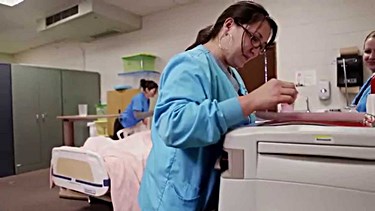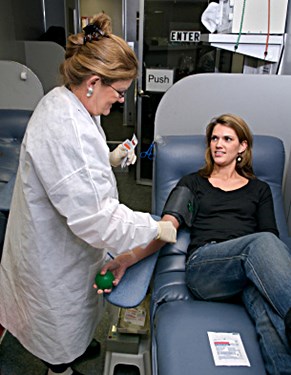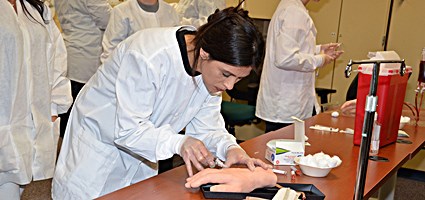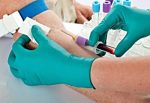If you’re looking into a career as a phlebotomist or technician, the first question that you may have is, how long is phlebotomy training? This is followed closely by where can I work when qualified? It makes sense to check the length of time it will take to become a phlebotomist, but the good news is that it doesn’t take that long.
Phlebotomy is a lucrative career because the demand for quality phlebotomists is so high, thanks to advancements in medical technologies. Hospitals are actually recruiting training centers to hire new certificate-holders, so it’s certainly a career worth getting into, and actually learning the skills and getting the necessary training can take a lot less time than you might expect. Let’s take a closer look at how long it takes to become a phlebotomist, and what you can expect from the training program.
How Long Does Phlebotomy Training Last & What Will You Learn?
So, how long is phlebotomy school? Roughly anywhere from 4-8 months, depending on where you go, and how much hands-on experience you get. Some programs can go up to 12 months if more hands-on, clinical work is included.
Most phlebotomy training courses will cover five areas on the academic side, including:
Anatomy
This is the study of the systems of the human body, including respiratory, nerve system, musculoskeletal system, etc. You’ll need to know every one of these systems when it comes to identifying illnesses, etc. in the blood, and how they may affect different areas of the body.
Needle Techniques
You’ll learn how to draw blood properly and the right resources when it comes to finding veins, etc. Some of this will come naturally with time and practice, which is why most organizations require a specific amount of venipuncture during your training (see more information below).
Patient Interaction
Find out how to talk with patients make them feel comfortable and answer questions. Some students will have a more natural ability for this than others, but there are a few important tactful procedures to learn, considering you’ll be dealing with a wide variety of different people on a daily basis.
Safety Procedures
Most safety procedures are consistent in hospitals throughout the country, so a good training program will cover the overall guidelines you’ll need to make sure you’re doing your job as safely and as sanitary as possible.
Lab Reporting
You’ll need to learn the language of the lab, as well as how to use equipment, and how to report your findings properly to the physician on staff. This is extremely important, and while most people tend to focus on drawing blood itself as the most significant aspect of being a phlebotomist, actually providing the right reports and data is just as significant, and potentially life-saving for the patient you’re working with.

This may seem like a lot to cover in less than a year, but it’s all extremely important when it comes to being a good phlebotomy technician. However, you won’t just be reading from a book or finding information online the entire time. It’s equally important that you understand how to use everything, from syringes and vacuum tubes, to how to deal with things like medical waste. These practices will typically start out in classroom settings, and move into more hands-on settings where you can get an actual feel for how to perform the tasks correctly.
Qualifications Needed To Become a Phlebotomist
Once you complete your training, you can begin searching for a job as a phlebotomist. However, if you want to give yourself even more of an advantage, you can continue your education and training procedures to become certified. The certification process can take another month or two, and typically requires a certain amount of venipuncture to have been done.
Venipuncture is the process of taking a quality blood sample and identifying and labeling it correctly. Think of the first time you learned to drive a car; chances are, you had to drive so many hours with a licensed driver before you could get a license on your own. The same principle applies here. Different states have different requirement for the number of venipunctures you’ll have to do before receiving your certification, but it is typically anywhere between 50-100.
Some states can actually require certification in order to become a phlebotomist, so if you’re looking for the best possible job opportunities, trying to become certified may be the right way to go. Another month of training for many more opportunities ends up being a small price to pay in the long run.
If you do end up going for your certification in phlebotomy, a helpful ‘tip’ is to look into hospitals in your area who provide the certification training. Many times, they’ll be able to hire you immediately once your training is complete. From there, you can work under the phlebotomist supervisor for a period of time, before being able to perform the proper procedures on your own.

This can be a helpful hint to remember if you’re anxious to get a job as quickly as possible following your training. You’ll also already be one step ahead in knowing the hospital’s specific procedures, protocol, safety rules, etc. It will benefit both you and the medical establishment you’re working in.
How Long Is Phlebotomy Training Online?
As stated above, you can complete much of your actual online phlebotomy training online if you wish. There are also free training options. However, it doesn’t necessarily speed up the process. While you can work at your own pace (and sometimes even work ahead), these digital phlebotomy courses are designed with a specific timeline in mind.
The positives of online courses are obviously convenience. If you’re working another job, going to school, or have a busy life, you can typically work on the courses whenever you have free time. Like many other online courses, that is essentially what it was created for, and the convenience factor draws in many people.
Another plus side to online training is that you choose the actual pace while you’re learning. If you’re someone who typically needs a little extra time, or if you have questions you’d like to research to make sure you’re getting a thorough grasp on things, online training allows you to do that. You can take all the time you need to complete the coursework, and perhaps have more confidence in what you’ve learned because you were able to do it at your own pace.
However, online classes in phlebotomy require someone who is extremely disciplined. It’s easy to get distracted elsewhere, or push off your coursework, etc. Some people tend to do better in a structured classroom setting. Online training for phlebotomy is really a personal preference, and the timeline difference is essentially up to you.
Another potential downside to online certification or general training is the lack of hands-on experience. Reading the materials and being a good test taker can certainly be useful, but when it comes down to it, you’ll be working with actual people and performing actual medical procedures on the job, so it’s important to be comfortable doing that. In a classroom setting, you’re likely to get more of that hands-on experience and be more confident in your actions when it’s time to put them into practice. And, as already noted, some states require this kind of hands-on experience before you’ll ever be able to be an actual phlebotomist.

How Long Will It Take To Become A Phlebotomist?
How long it takes you to complete phlebotomy school has a lot of different factors that come into play. We’ve summarized the various options and paths you can take on your way to becoming a phlebotomist, and the rest is up to you. The most important things to keep in mind as you begin your journey into phlebotomy are your own personal time constraints, how quickly you want to become certified, and how long do you actually want it to take before you can become a phlebotomist?
From start to finish, with hands-on training, on the job training, and working under a supervisor, it could take about a year for you to be in the position you’re looking for, assuming you find a job fairly quickly. Don’t get discouraged when it comes to that timeline – consider how long most typical collegiate training lasts, and understand that you can start in one of the most popular and lucrative careers of this decade in a quarter of that time (and for far less tuition money!).
Phlebotomy training is a great thing to look into if you want to step into the world of medicine, but don’t have a lot of immediate time or resources. Whether you choose a classroom setting or set up your certification training online, you can advance yourself in a completely new and exciting career in a very short amount of time.






